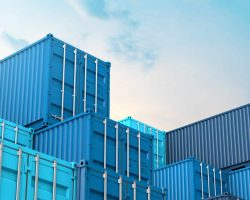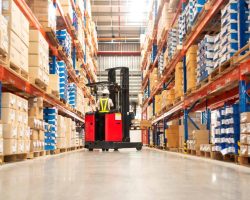 |
Before gifts can make it under holiday trees this year, they are going to have to pass through one of the largest-scale traffic jams modern supply chains have ever experienced. In the U.S., the retail industry is not fretting over customer demand headed into the holiday shopping season, as estimates expect sales could increase by as much as 10% this year, which would come on top of relatively strong growth last year that surprised pretty much everyone.
However, before retailers can make their sales, they need product to sell and that is where the problem lies. Container ships are packed, ports are clogged, contracts with carriers are falling to the wayside and the rush to ship goods for the holidays is only adding traffic to what was already intense congestion. There simply are not enough containers, ships, trucks and trains available, resulting in more volume than any part of the supply chain pipeline can adequately handle.
So, not only are retailers competing with each other for sales, they are competing just to get cargo space to ship goods. Freight prices have skyrocketed as a result, and shipments still lag or even fail to materialize. Many of the bottlenecks are tied to the unexpectedly swift surge in consumer demand in the U.S. this year, combined with capacity shortfalls at numerous points along the supply chain. Those reductions stem from COVID-19 outbreaks at ports and factories, as well as capacity taken offline last year as demand plummeted and retailers cancelled orders. Many retail companies feel that supply chains have been permanently disrupted by COVID-19, and most expect it to be a rough holiday, one unlike anything we’ve seen before. The prediction is we are going to see a lot of bare shelves, with many retailers not even able to obtain half of the merchandise they expected to offer this season.
In terms of freight costs, the previous norm of $2,000 to $3,000 for ocean-bound shipping containers from areas such as China, have been replaced by rates that have hit as much as $25,000. While many companies have been forced to pay such rates to ensure product supply, others have held off shipping, hoping for lower rates, only to find rates remain high. At the same time carrier space is as crimped as ever, resulting in inventory remaining stuck in overseas factories. To overcome such issues larger retailers like Walmart, Home Depot and Ikea have chartered their own ships to ensure goods get delivered. Others have spent what would in past years have been unthinkable amounts of money to fly product in by airfreight, usually a transportation mode of last resort for many companies. This dynamic will likely lead to one of the most expensive holiday shopping seasons for consumers.
In the end, it is expected that even large retailers will struggle to hold onto their margins and keep shelves stocked for the holiday season. Smaller players will have to stock what they can and lay off the deals that are the hallmarks of the shopping season. We expect to see a lot less promotional activity this year, as retailers try to recoup some of the margin they are losing across the board, adding that prices on consumer goods are one of the few levers you can adjust in this market.
As a forewarning to those who wait until the final days before Christmas to buy gifts, you may be in for a really rough holiday season.
For more information, contact David Lychek, Director – Ocean & Air Services.
















